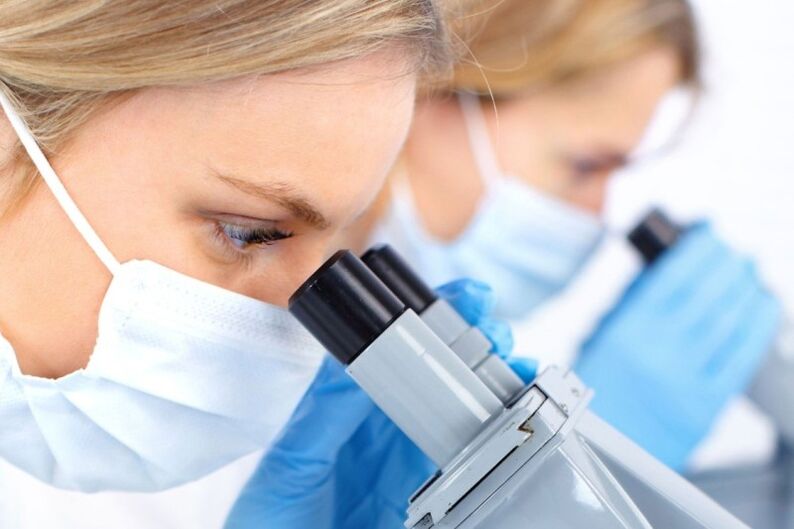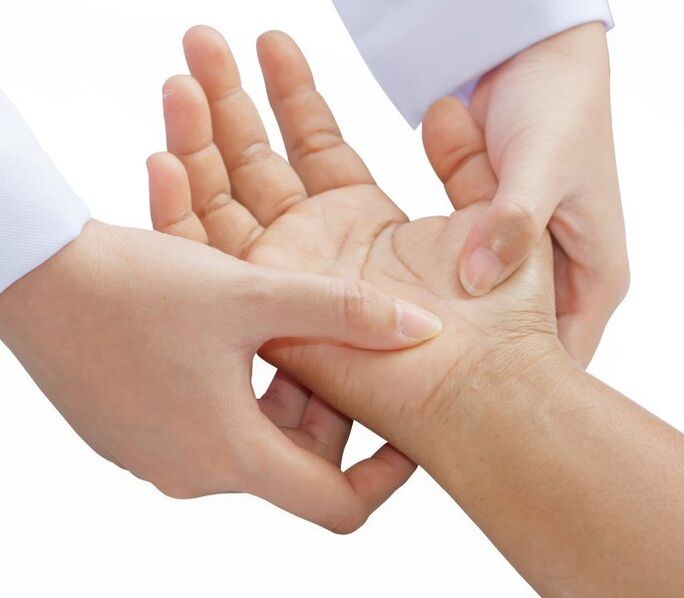Psoriasis is a common skin disease of neurogenic etiology. The disease is not contagious and does not spread from person to person. Often, psoriasis becomes chronic because of its latent course. Usually, the disease develops in people under the age of 30, but it can also occur in old age.
External symptoms may be absent, the clinical picture of the disease depends on its type and stage. Often, psoriasis begins with the appearance of bright red spots, which are covered with dry scales, so the disease has a second name - squamous lichen.
Skin patches can have different sizes, some of which can merge into one affected area of skin and stand out significantly above the surface.
Psoriasis causes physical and mental discomfort in the patient, the disease periodically worsens, in between, a period of remission occurs and the symptoms subside.
Skin patches are called psoriatic plaques or papules, often they affect the elbows and knees, spreading to the head and in the lumbar region. Plaque can affect other parts of the body, depending on the type of disease. Treatment can last more than a year.
Causes of disease onset

Psoriasis has several causes that are linked to a variety of factors, both external and internal:
- the common cause is genetic inheritance;
- the disease can develop due to constant stress, anxiety, shock, depression and mental disorders;
- various autoimmune diseases and damage to the immune system create ideal conditions on the surface of the skin for the onset of disease;
- chronic psoriasis can also cause metabolic disorders, as well as damage to the endocrine system.
The type of psoriasis and its course depend on the etiology of the disease.
Classification of psoriasis

The disease has various forms, depending on the external manifestations and symptoms:
- The most common form of the disease is scaly psoriasis. The surface of the skin is covered with red or pink patches covered with scales. They are very different from healthy skin, are denser and grow on the underlying surface. The scaly layer is easily removed and, if disturbed, begins to bleed, causing severe itching and burning. As the disease worsens, spots can grow and merge with each other, forming large areas of damage.
- Intestinal psoriasis looks different, the spots can be pink or purple, during the period of its deterioration it becomes brighter. Scales can be larger and look like droplets; it can also merge into large areas.
- Another form of psoriasis that only affects the folds and folds of the skin - the elbows, armpits, the area under the folds of belly or chest fat, in the groin. The spots are smooth, even, not itchy and have no scales. If there is friction with clothing in the affected area, the surface of the stain is easily injured.
- Chronic forms of nail psoriasis are also common, especially nail plates on the affected fingers or toes. Nails lose shape, change shape and change color. Nails begin to thicken and flake off, the disease can trigger the loss of nail plates. In the early stages, nail psoriasis is easily confused with a fungal infection, so you need to see a doctor for proper diagnosis and treatment.
- The most severe form of the disease is pustular, characterized by the appearance of blisters filled with brightly colored fluid, which are easily broken by rubbing clothes. When the pustule is destroyed, pus forms in it and a secondary infection of the skin occurs. This form of psoriasis is dangerous because it can cover almost the entire body, which exacerbates its course.
- Rheumatoid psoriasis not only affects the surface of the skin, but also the joints and periarticular soft tissues. This mainly involves the knee, shoulder and hip joints. Lesions are indicated not only by external symptoms, but also by pain in the joints, which brings additional suffering to the patient. If the hand or foot is affected, swelling of the finger is observed, its sensitivity decreases and deformation begins. In the most severe and neglected form, patients can lose limb sensitivity and become disabled.
All of these forms can develop on their own, or they can appear together, all depending on the severity of the disease.
Stages of psoriasis

The chronic form of the disease has different stages, each with its own symptoms and characteristics:
- with progressive stages, the spots, covered with scales, rapidly appear and enlarge. They are usually red in color, but can change color depending on the form of the disease. The skin in these places is very itchy, burning and painful;
- in a stable stage, the disease does not cause a painful sensation, it flows profusely, the scales grow gradually, they can merge periodically;
- with a degree of regression, papules can resolve on their own, they cause no concern other than external signs.
Psoriasis is a chronic disease that alternates between exacerbation and remission.
Causes of deterioration

Exacerbation of the disease can be caused by many reasons, both external and internal:
- prolonged exposure to cold with frostbite of the skin;
- violation of the hormonal background of the body during puberty, pregnancy or menopause;
- long-term therapy with certain drugs (antibiotics), self-medication, violation of the dose while taking vitamin complexes and herbal supplements;
- the disease can be exacerbated by climate change or exposure to sunlight;
- alcohol abuse can not only trigger the exacerbation of the disease, but also complicate its course;
- trauma, burns, frostbite and other mechanical damage to the skin always cause the severity of psoriasis;
- infection with viruses and bacteria can lead to disease outbreaks, sometimes common respiratory illnesses cause skin diseases to worsen.
Rheumatoid forms of psoriasis have seasonal severity:
- in summer - if in the sun;
- in winter - due to hypothermia.
Ultraviolet rays help papules heal, but the sun’s infrared rays irritate the skin.
Psoriasis is diagnosed without much difficulty, the disease has obvious symptoms, additional studies in the form of blood tests and skin biopsies are performed to exclude other diseases.
Treatment

Medicine today has made great strides in the treatment of skin diseases, including psoriasis; there are several methods that can be used to treat advanced forms of the disease. Doctors determine the method of treatment individually, based on the form, stage, causes and symptoms. Treatment is always carried out comprehensively, combining drug therapy and physical therapy.
Drug treatment includes the use of internal and external drugs:
- to eliminate skin pathology, ointments based on salicylic acid, sulfur, dithranol and urea are used;
- glucocorticoid ointment;
- lotion for scalp treatment.
In the stage of exacerbation, hormonal ointments are used to eliminate the inflammatory process, treatment is always started with a less potent one. If the disease begins to recur, use a strong fluoridated agent. They are used for two weeks to achieve results.
For the elderly and children, ointments with the fewest side effects are used.
With increasing doses, dithranol -based ointments are prescribed to relieve inflammatory processes, itching and swelling.
Preparation with kalcipotriolhas a direct medical effect on pathogenetic provoking factors. It has anti-inflammatory and immunomodulatory effects. Usually, a course of treatment in two months has a significant positive result, the rash on the skin may disappear completely. This drug has no side effects in the form of skin atrophy and has a lasting effect. This drug is used in the treatment of tear -shaped forms of psoriasis, which are difficult to treat.
All medications must be replaced, otherwise addiction may occur and the body will stop responding to it.
Treatment with aromatic retinoids is also considered effective.
In addition to drug therapy, a number of conditions must be met for successful treatment:
- follow a nutritional diet;
- taking the necessary vitamins under the supervision of a doctor;
- avoid stressful situations, in the event of stressful situations, you must see a doctor to set the necessary funds;
- protect the affected area from exposure to chemicals as much as possible, especially hands and nails;
- wear cotton clothing only so as not to cause additional skin irritation;
- do not consume alcoholic beverages and cakes, and contact with allergens should also be avoided.
If all the recommendations and rules of treatment are followed, it is possible to achieve remission of the disease, and in some cases - complete cure.























